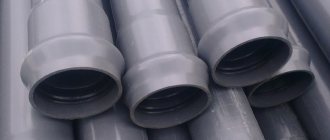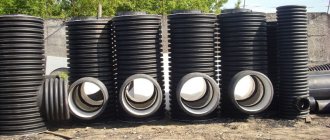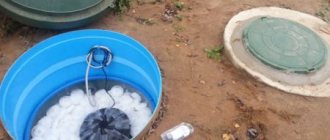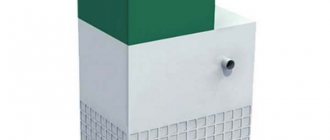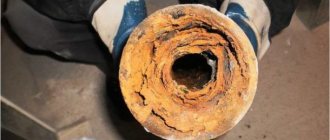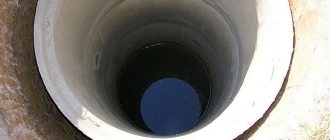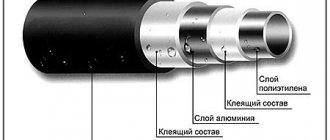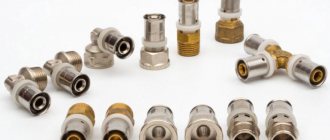Pipelines made of cross-linked polyethylene with aluminum reinforcement are widely used in heating systems of individual houses. When installing them, be sure to use a calibrator for metal-plastic pipes.
There are several types of calibration devices, each of them is designed to ensure high quality installation work. To decide on the choice of a calibrator, it is useful to study the principle of its operation and the models offered on the market.
Rice. 1 Metal-plastic pipes in the heating system
What is a metal-plastic pipe and its dimensions
For the manufacture of pipes, heat-resistant polyethylene with additional molecular bonds, called cross-linked, was developed.
Another type of modified polyethylene is called heat-resistant. Pipes for underfloor heating are made from these two materials and are highly flexible and elastic. However, they have significant disadvantages, namely a significant linear elongation coefficient at high temperatures and high oxygen permeability.
To combat the negative properties, a technology was developed to introduce an additional aluminum layer into the structure of the pipe shell made of modified polyethylene. This made it possible to significantly reduce the thermal linear expansion of pipes, increase their thermal conductivity coefficient, which is especially important for heated floors, and reduce the diffusion of oxygen through the walls to zero.
Pipes made of metal-plastic (MP) are more durable and rigid compared to cross-linked polyethylene. Instead of tension fittings, crimp press couplings became their main installation method.
Rice. 2 Plastic pipes
A typical press coupling is a fitting with a sleeve attached to the body. During installation, the fitting is inserted into the MP pipe, with its shell located between the internal fitting and the outer sleeve.
In order for the fitting to fit tightly to the walls from the inside and outside (this, when crimped, will ensure a reliable, durable and strong connection), the walls of the MP pipe must have a fixed thickness with a minimum error.
This is how a metal-plastic pipe differs from other pipe polymers. Its internal and external diameters are strictly fixed and are related as follows: 16 - 12, 20 - 16, 32 - 26, 40 - 32, 50 - 40 mm.
That is, the wall thickness of the 16th and 20th MP pipes is always 2 mm, of the 32nd - 3 mm, and of the 40th - 4 mm.
Rice. 3 Examples of working with calibrators for metal-plastic pipes
Article on the topic:
Press pliers for metal-plastic pipes - types, models, how to use. The article describes how to connect metal-plastic pipes, the types and popular brands of press pliers, as well as the technology for crimping pipes with hand pliers!
Types of calibrators
There are two main types of pipe calibrators:
- simple plastic;
- combined with chamfering knives.
The former are used for flaring and leveling the end of the pipe in order to restore a perfectly round cross-section, which greatly facilitates the installation of fittings. They are made of high-strength plastic with high abrasion resistance.
The latter allow you to perform not only flaring and leveling, but also chamfering, which eliminates the formation of burrs and makes installation even easier and more reliable.
Plastic calibrator for m/p pipes, 10-26 mm. Cost 136 rub.
Technologies for connecting metal-plastic pipes
A distinctive feature of metal-plastic pipes is their high rigidity and strength with relatively elastic outer and inner walls. This allows you to use several connection methods when installing them.
Crimping press fittings
This is the main method of joining MP pipes, providing high reliability, durability, and strength. After the press connection, the pipeline can be placed in grooves and covered with plaster solutions, hiding them in the walls.
To secure the fitting, it is inserted inside the pipe, after which the upper sleeve is crimped with special pliers.
Compression couplings
When installing, a herringbone type fitting with rubber ring gaskets is inserted inside the pipe, and a cracker (ring with a slot) with a union nut is placed on the outside of the shell. After tightening the nut, the cracker compresses the pipe shell, pressing its inner walls against the fitting. Thanks to the aluminum reinforcement, the shell is deformed and maintains a reliable, durable and rigid connection with the fitting.
Push fittings
Push fitting is one of the latest developments from foreign manufacturing companies. The device is a compression fitting of a special design.
Some operating tips
It is strictly not recommended to use a calibrator for metal-plastic pipes with a chamfer remover for straightening pipes. During operation, the tool knives become dull, so to obtain a smooth chamfer, they need to be periodically checked and, if necessary, sharpened (for this, you can use a needle file or emery). Better yet, buy a new device - its price is not so high that you waste time on this boring operation. The calibrator fittings must be perfectly smooth, so they must be protected from damage and high temperatures.
Calibrator for metal-plastic pipes - varieties
There are not many models of calibrators for metal-plastic pipes on the market. They are mainly designed for the most common pipe outer sizes of 16, 20, and 26 mm.
Calibrator-roller
The simplest T-shaped device is a handle with a rod with segments of different diameters located perpendicular to it.
The roller calibrator can be made entirely of plastic or with a metal calibrating rod. The standard inexpensive gauge for metal-plastic pipes is designed for rolling products with outer diameters of 16, 20, 26, and 32 mm.
There are special attachments for rolling with shanks for mounting in power tool chucks. Their use allows you to mechanize and speed up the progress of installation work.
Rice. 6 Beveling calibrators for metal-plastic pipes
Calibrator chamfer for metal-plastic pipes
The device is made in the form of a three-rayed star with knives at the base. The multifunctional calibrator, popular among all installers, is made of plastic and is designed to work with MP pipes with outer diameters of 16, 20, and 26 mm.
Calibrator chamfer for screwdriver
The device has the form of a metal cylinder with a shank for clamping in the chuck of a hammer drill, drill or screwdriver. When using it, a chamfer is removed simultaneously with calibration.
The nozzle is used by professional installers of metal-plastic pipelines; its use can significantly increase the speed of work. For different MP pipes, separate devices are used for diameters of 16, 20, 26 and 32 mm.
Rice. 7 Calibrators for screwdrivers
Article on the topic:
What are the types of fittings for metal-plastic pipes, installation features. The article describes options for connecting metal-plastic pipes, types of fittings, an overview of leading manufacturers and installation instructions.
Principle of operation
Metal-plastic pipes must be calibrated in accordance with the following instructions:
- Before proceeding with calibration, the pipe must be cut at an angle of 90 degrees to the longitudinal axis. Otherwise, calibration will not be effective enough, which may lead to leaks and other problems when using a metal-plastic system;
- The tool fitting is placed in the pipeline along its axis; it is important to avoid distortions;
- The pipeline element is pushed onto the fitting until the tool knives reach its inner layer. Afterwards, the calibrator performs rotational movements.
Something is not clear? In this case, before starting installation work, you should definitely watch a special training video.
Calibration of metal-plastic pipe
Rules for using the calibrator
Metal-plastic pipes are one of the most common materials for connecting heating and plumbing systems. They cope excellently with high temperatures, bend easily and are easy to install, even with your own hands.
Calibrator for metal-plastic pipes
For installation you will need special tools, in particular a pipe bender, scissors and a calibrator for metal-plastic pipes. Learning to use these devices is not difficult.
Calibrator: what is it for?
A calibrator for metal-plastic pipes is a tool for processing the ends of pipe products after cutting, which ensures the fitting of elements for the most airtight connection with fittings.
Plastic calibrator
Thus, the main functions of the calibrator:
- Removing burrs that formed during the cutting process. For example, if the cutting was performed not with a special pipe cutter, but with an ordinary hacksaw;
- Aligning the cross-section of the pipeline, if it has flattened and become oval, this will greatly facilitate the installation of connecting elements in the future;
- Chamfering.
Calibrators come in several varieties:
- Simple plastic, which evens out pipeline deformations that occur during the cutting process;
- A chamfering calibrator equipped with special blades that simultaneously aligns the pipe and removes the chamfer before joining the fittings. This device has a polypropylene body with knives made of alloy hardened steel mounted in it.
The chamfer calibrator is designed for 250 operations, after which the knives will need to be sharpened for further use. You can do the cleaning yourself using regular sandpaper.
Main characteristics
A calibrator is a special device that performs three main functions:
- calibration;
- chamfering;
- adjusting the shape of the pipe end after cutting and other operations.
These activities allow you to prepare metal-plastic pipes for installation of connecting elements. For joining, as a rule, crimp fittings or press models are used.
Today you can find several types of this device, which are used for pipes with different cross-sections. When choosing a calibrator, it is recommended to pay attention to its markings. The diameter of the device can be 12, 16, 20, 26, 33 mm.
Such devices facilitate a gradual transition between pipeline elements that have different sizes. The calibrator includes the following parts:
- body made of polypropylene (PP);
- plate with a cutting edge (knife).
Let's consider the main advantages of using such a device when installing metal-plastic structures:
- compactness;
- savings due to the fact that trimming uneven ends of pipeline parts is eliminated;
- ease of installation;
- high speed of work;
- device reliability.
Similar devices are made from different materials and may have differences in design
It is also worth noting that the device is symmetrical for convenient performance of work. Using a calibrator allows you to simplify the installation of the pipeline structure and carry it out as correctly as possible.
Why do you need a calibrator?
This is a tool used to work with polypropylene, plastic, metal-plastic, as well as thin-walled steel and copper pipes. It is necessary to prepare the cut for connection with the connecting element.
Such a tool performs several functions:
- Direct calibration;
- The expander produces flaring for further connection;
- Adjustment of the end (its alignment after trimming);
- Chamfering (not all models have this feature).
Installation technology. Installation instructions
Compression fitting
- The fitting is unscrewed: the mounting nuts are removed from the ends, and the O-rings are removed from the fittings.
- The pipe must be straightened and cut using scissors. It is not recommended to use other cutting tools: the cut is uneven and the integrity of the protective layer of the material may be damaged.
- The sections must be carefully cleaned and calibrated. Poorly machined ends can damage the O-rings and compromise the tightness of the connection.
- A union nut with a sealing ring is put on the prepared section. The fitting fitting is connected to the pipe and secured with a nut: first manually and then using a wrench.
Control the compression! When you hear the characteristic crackling of metal, stop the process. It is important to maintain a balance: a poorly tightened fitting will not be able to ensure the tightness of the system, and an overtightened one can be immediately thrown away.
To learn more about how installation is carried out using threaded (collet) fittings, watch the video:
Press fitting
- As in the first case, the pipe is pre-prepared: cut, cleaned and calibrated. Pay attention to the end: its cut should be perpendicular to the central axis of the conduit.
- Having removed the sleeve, we check the rings and gaskets, and then assemble the fitting. This is done in order to exclude the possibility of installation with defective elements.
- A piece of pipe is inserted onto the fitting of the press fitting. The seating depth is controlled visually (through a special hole on the sleeve).
- From the opposite end of the fitting, the nozzle process is carried out in the same way.
- Using press pliers, we press the connecting sleeve inside the fitting.
The installation process will be faster and more successful if you buy fittings and pipes from the same manufacturer.
Push fitting
- No additional tools or accessories are required for connection.
- You need to check whether the block is tightened all the way.
- A section of pipe prepared in advance is simply inserted into the fitting hole.
To reuse the push fitting, it is necessary to disassemble the structure. To do this, you need to unscrew the holding block and remove the pipe. The disc spring must be replaced with a new one - now the fitting is ready for use again.
Fastening the assembled sections to the walls is carried out using special clips or brackets, which must be selected taking into account the diameter of the product.
How to bend metal-plastic pipes
You can bend a metal-polymer pipe manually. There are small subtleties in this matter that are worth knowing: the bending process must be carried out gradually (in several stages) and with the help of a hair dryer.
It is necessary to heat the pipe with a hairdryer. Wrap your hands around it so that your thumbs are along the pipe and serve as a kind of support. Slowly and gradually we begin the process of bending in several approaches, if necessary, heating the product with a hairdryer.
Do not make sudden movements! It is important to maintain the integrity of the inner layer and not deform the outer one. When folding, do not forget about the permissible bending radius, which is indicated in the “Technical Specifications” section. Use small trimmings to practice your skills.
You can watch the video on how to properly bend metal-plastic pipes:
Scissors, pipe cutter and cutter
The metal-plastic pipeline is supplied in coils. Due to its considerable flexibility, there is no need to purchase a large number of connecting elements or adapters. As a rule, you can use a single piece of tubular product, and connections are made exclusively at the points of connection to plumbing fixtures or radiators.
The pipes must be cut strictly perpendicular to the axis; for this reason, it is recommended to use special devices.
For small-diameter products, which are most often found in household engineering systems, metal-plastic scissors with wedge-shaped blades are suitable. They allow you to cut the pipeline smoothly, without nicks or burrs. No great effort is required to operate the device.
Shears for metal-plastic pipes
Large pipe diameters can only be cut with a cutter or pipe cutter, which allows you to get an even and high-quality cut for any diameter of the pipe product.
Depending on the structure, a pipe cutter can be:
- Telescopic;
- Ratchet.
How to use the device
Learning to use the device is quite easy. Anyone can do the task, even if they have never had to deal with this type of operation before.
How to install metal-plastic pipes
Main stages of working with the calibrator:
- Make sure that the pipeline is cut at a right angle.
- Check whether the tool is suitable for working with pipes of the existing diameter.
- The calibrator fitting is inserted into the pipe. Distortions are unacceptable; they can cause the calibrator to malfunction and result in pipe leaks.
- Make sure that the blades of the knives touch the inner chamfer.
- Turn the handles of the device with rotational movements of your hand.
Attention! It is prohibited to use the calibrator for a pipeline with a diameter that is not indicated on the device labeling.
Correct installation of metal-plastic pipes is possible only if special equipment is used. The calibrator guarantees a reliable connection of the pipeline with fittings. It is necessary to store the calibrator in a place where direct sunlight is excluded, this will extend its service life.
